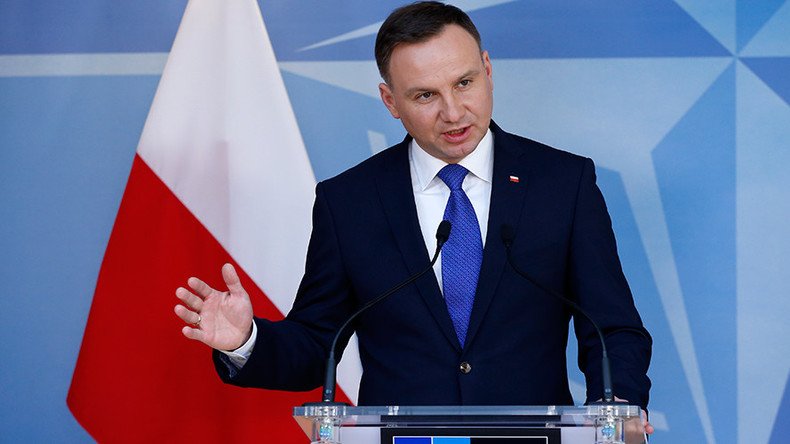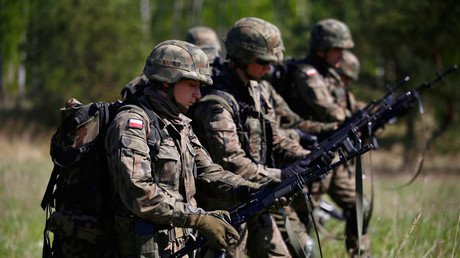Poland could soon be home to ‘more NATO ... than ever’, Stoltenberg says

NATO’s secretary general has pledged his readiness to soon have “more NATO in Poland than ever before,” answering the Polish president’s call for a beefed-up alliance's presence in the country.
Polish President Andrzej Duda has said that he would welcome the deployment of a substantial amount of NATO troops and military equipment in Poland, as well as throughout central and eastern Europe
“The point is that NATO troops are deployed and are visible,” Duda said while on a visit to the alliance’s headquarters in Brussels on Monday.
NATO’s next summit is set to be hosted by Poland in July when Warsaw is expected to officially voice its request to station NATO troops in the country long-term.
Duda didn’t specify the numbers, but when asked, said that NATO’s troops should be able to “ensure the security of the eastern flank.”
“Today everything suggests that we need a significant presence of infrastructure and of troops there, on the ground, in central and eastern Europe. We need a good system of support for these forces and a system of defense in case of any act of aggression,” Duda said.
The Warsaw summit will be aimed at stepping up security of the former Soviet bloc countries as well as those as risk of Islamic State extremism, Duda said.
SG @JensStoltenberg & Pres. of #Poland@AndrzejDuda discuss #WarsawSummithttps://t.co/JdsgjlwuALpic.twitter.com/iBgydIvbYt
— NATO (@NATO) January 18, 2016NATO seem to be ready to satisfy Poland’s request with the alliance’s secretary-general Jens Stoltenberg promising that the matter will be settled after the Warsaw summit.
“NATO now has a persistent military presence in the region of which Poland is a part. And I trust that after the Warsaw summit we will see more NATO in Poland than ever before,” Stoltenberg was cited as saying by AP.
An increase in the deployment of NATO in Poland can hardly be welcome in Russia, which has always been bitterly opposed to the alliance’s expansion towards its borders.
Russia’s security strategy for 2016 names NATO’s expansion toward Russian borders as being one of the main threats. “The principles of equal and indivisible security” are not being respected in the Euro-Atlantic, Eurasian and Asia-Pacific regions, said the document.
However, it also notes that Russia is still interested in a dialogue and good relations with NATO, the US and the EU.
Tensions have been growing ever since Russia’s reunification with Crimea in 2014 and the conflict in eastern Ukraine. NATO has significantly increased its military presence along Russia’s borders, including in the Baltic States and eastern Europe, The alliance accuses Russia of providing support to Ukrainian rebels, who rejected a 2014 armed coup in Kiev.
The year of 2015 saw a number of large-scale military drills carried out by NATO in Europe, including those in late August and September which have been hailed as the biggest airborne military exercises since the end of the Cold War. The drills involved about 5,000 soldiers from 11 NATO member states.













